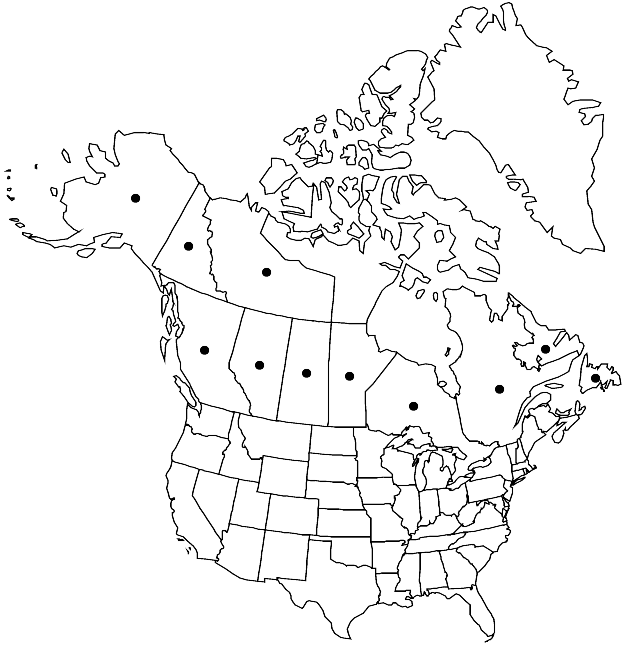Rhizomnium gracile
Ann. Bot. Fenn. 10: 16, figs. 62–73. 1973.
Plants 1–3 (–5) cm. Stems dark red or reddish-brown, or brown when old; micronemata present, often indistinct. Leaves green or occasionally pale reddish or reddish-brown, variously contorted when dry, obovate or orbicular, 1.5–3 (–4) mm; margins green or rarely reddish or pale-brown, blackish on older leaves, 1-stratose; apex rounded or rarely retuse, rarely short-apiculate; costa ending well before apex to 7/8 leaf length or rarely longer, often 2-fid distally; medial laminal cells elongate, 35–65 (–100) µm, collenchymatous, walls pitted; marginal cells linear, rhomboidal, or ± rectangular, in 1–2 (–3) rows. Sexual condition dioicous. Seta 1.5–2 cm. Capsule ovate to subglobose, 1–1.5 mm; operculum conic; exostome brown, lamellae less than 20. Spores 28–36 µm.
Phenology: Capsules mature summer.
Habitat: Muskegs, bogs, seeps, cliff crevices, moist soil, peat, humus
Elevation: low elevations
Distribution

Alta., B.C., Man., Nfld. and Labr., N.W.T., Ont., Que., Sask., Yukon, Alaska, Europe
Discussion
The leaves of Rhizomnium gracile are usually unpigmented, including the margins. Rhizomnium pseudopunctatum is similar in appearance but distinguished by its synoicous sexual condition, larger leaves, and usually pigmented leaf border.
Selected References
None.
Lower Taxa
"longer" is not a number.